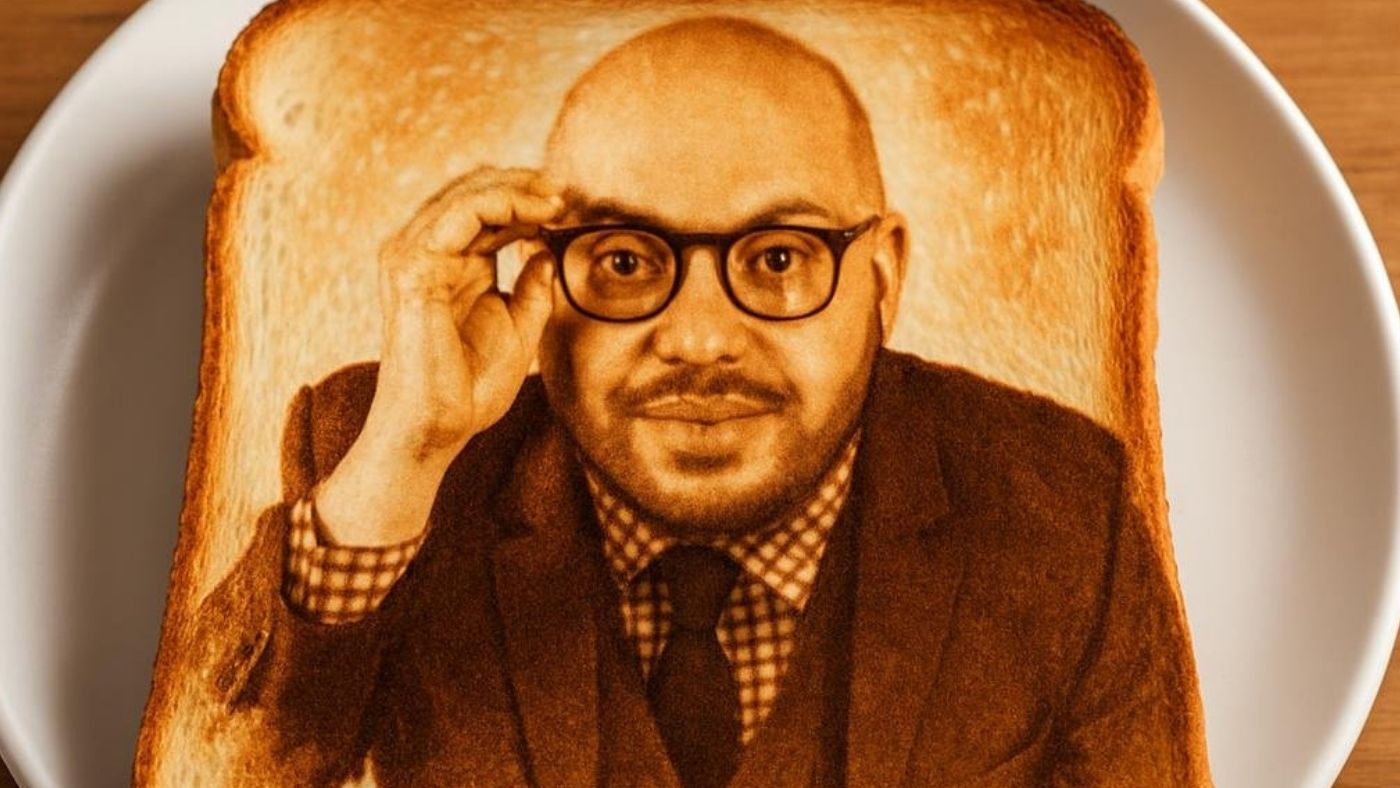You’re buttering your morning toast when you notice something strange. The golden-brown pattern on the bread looks exactly like a face.
But it’s not just any face! Maybe it’s Elvis, maybe it’s Jesus, or maybe it’s just a smiley expression staring back at you.
You laugh, snap a picture, and maybe even post it online.
This quirky experience isn’t just a coincidence. It’s a well-studied psychological phenomenon called pareidolia. Pareidolia is when we see meaningful patterns, like faces, animals, or symbols, in random or ambiguous things. When it’s specifically faces, it’s called face pareidolia.
It’s the reason we see bunnies in the clouds, a man on the moon, dragons in rock formations, and sometimes even the Virgin Mary in a grilled cheese sandwich.
The Everyday Phenomenon
Pareidolia happens constantly in daily life. Two dots and a line can instantly look like a smiley face. The front of a car can seem to “grin” or “frown.” A water stain might look like a map of a country. A cloud might morph into a running horse.
Face pareidolia is the most famous version, probably because faces are so important to us. But non-face pareidolia is just as common. People see animal shapes in clouds, letters in wood grain, or even entire landscapes in spilled coffee.
The internet loves these moments. Social media is full of photos of potatoes shaped like bears, outlets that look surprised, and clouds that resemble cartoon characters. Entire communities are dedicated to sharing these accidental works of “found art.”
The Science Behind It
Why does pareidolia happen? The short answer is that our brains are wired to be pattern-detection machines. We are constantly searching for order and meaning in the chaos of the world.
For faces, the explanation is especially strong. From birth, humans are tuned to recognize faces. Babies only a few hours old turn their heads toward face-like patterns. The fusiform face area (FFA) in the brain is specialized for processing faces, and it’s so sensitive that it sometimes overreacts. Instead of waiting for a perfect face, it flags anything that vaguely resembles one.
For non-face pareidolia, the principle is the same. Our brains are primed to recognize animals, symbols, and familiar shapes because those patterns were important for survival. Spotting a snake in the grass or a predator in the shadows could mean the difference between life and death. From an evolutionary perspective, it’s better to have false positives (“that cloud looks like a wolf”) than to miss a real threat.
Neuroscience studies show that when people see face-like or object-like patterns, their brains activate in similar ways as when they see the real thing. In other words, pareidolia isn’t just imagination; your brain is genuinely processing it as if it were real.
Why It Matters
Pareidolia might seem like a quirky trick of perception, but it reveals something profound about how our minds work. It shows that perception isn’t just about passively recording reality. Instead, our brains are actively interpreting, predicting, and sometimes over-interpreting the world.
This also explains why people sometimes see religious or supernatural figures in everyday objects. A tortilla might resemble Jesus, or a tree stump might look like the Virgin Mary. For believers, these moments can feel miraculous. For psychologists, they’re fascinating examples of how meaning and pattern recognition intersect.
Pareidolia also plays a role in art, design, and marketing. Artists often use ambiguous shapes to suggest multiple interpretations. Designers sometimes give products face-like qualities to make them more appealing. That’s why cars seem to have “expressions,” and why robots with face-like features feel friendlier.
Pop Culture and Fun Angles
Pop culture is full of pareidolia moments. The famous “Face on Mars” photo from 1976 looked like a giant human face carved into the Martian surface. It sparked conspiracy theories and UFO folklore, even though later high-resolution images showed it was just a rocky hill.
And of course, the internet has turned pareidolia into a cultural pastime. From “angry” bell peppers to “happy” electrical outlets, these accidental discoveries remind us just how eager our brains are to find meaning everywhere.
Bonus: Hearing Patterns Too
Pareidolia isn’t limited to what we see. It also happens with what we hear!
This is known as auditory pareidolia. It’s when our brains find patterns in random sounds, like hearing words in static, whispers in wind, or hidden messages in music.
One famous example is the idea of “backmasking” in songs. Some listeners swear they hear secret messages when a track is played backward, even though the sounds are just random noise. Ghost hunters often report hearing voices in recordings of static, a phenomenon called EVP (electronic voice phenomena).
So, why does this happen?
Just like with visual pareidolia, our brains are wired to find meaning. Language and speech are so important to us that our auditory system is hypersensitive to anything that might resemble words. Even random noise can be interpreted as a voice if we’re primed to hear it!
Tomato Takeaway
Pareidolia is a fascinating window into how our brains work. We are wired to find patterns, even when none exist, because it’s safer to see too much than too little.
So the next time you see a dragon in the clouds, a face in your toast, or hear a “voice” in static, don’t dismiss it as silly. That’s your brain’s pattern-recognition system doing its job, albeit sometimes a little too enthusiastically.
In the end, pareidolia is a reminder that perception is not just about the world outside. It’s also about the expectations and imagination inside.
Fueled by coffee and curiosity, Jeff is a veteran blogger with an MBA and a lifelong passion for psychology. Currently finishing an MS in Industrial-Organizational Psychology (and eyeing that PhD), he’s on a mission to make science-backed psychology fun, clear, and accessible for everyone. When he’s not busting myths or brewing up new articles, you’ll probably find him at the D&D table or hunting for his next great cup of coffee.


